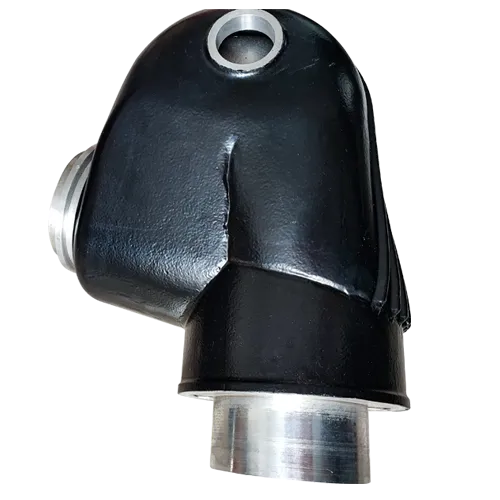Mobile:+86-311-808-126-83
Email:info@ydcastings.com
green sand aluminum casting
Green Sand Aluminum Casting A Comprehensive Overview
Green sand casting is a traditional and widely used method in the foundry industry, particularly for aluminum casting. The process involves forming molds from a mixture of sand, clay, and water, which allows for the casting of intricate shapes and designs. This article delves into the elements of green sand aluminum casting, its advantages, challenges, and applications in modern manufacturing.
The Green Sand Mixture
The term green sand doesn't refer to the color but rather indicates that the sand is moist and has not been chemically cured. The primary components of green sand include silica sand, clay (typically bentonite), and water. The silica sand provides the bulk and strength of the mold, whereas the clay acts as a binder, helping to retain the mold shape. Water is added to create a workable consistency that can be easily formed around patterns.
When creating green sand molds, the mixture is packed around a pattern that replicates the final shape of the casting. This pattern can be made from metal, wood, or plastic, and it is usually designed with a slight taper to facilitate easy removal from the mold. Once the mold is formed and the pattern is withdrawn, it is ready to receive molten aluminum.
The Aluminum Casting Process
In the green sand casting process for aluminum, the metal is melted in a furnace at temperatures exceeding 1,200 degrees Celsius (2,192 degrees Fahrenheit). Once molten, the aluminum is poured into the cavity of the mold. Due to the properties of aluminum, it flows well into intricate details, capturing fine features of the mold. After the metal cools and solidifies, the mold is broken away, revealing the finished casting.
Advantages of Green Sand Casting
1. Cost-Effectiveness Green sand casting is relatively inexpensive compared to other casting methods, making it an attractive option for both small and large production runs. The materials involved are widely available and inexpensive.
green sand aluminum casting

2. Flexibility This method can accommodate a variety of aluminum alloy compositions. It is particularly suitable for producing parts with complex geometries, allowing for innovative design solutions that might be difficult or costly with other casting methods.
3. Low Lead Time The ability to quickly create molds results in shorter lead times, enabling manufacturers to respond rapidly to market demands. This quick turnaround is especially beneficial in industries where time-to-market is critical.
4. Recyclability Green sand is recyclable and can typically be reused multiple times with minimal processing. This not only reduces waste but also minimizes material costs.
Challenges in Green Sand Casting
Despite its advantages, green sand aluminum casting does present certain challenges. The quality of the mold can be affected by factors such as moisture content, compaction, and the properties of the sand mixture. Moreover, achieving the desired surface finish and dimensional accuracy can be more difficult than in some other methods, such as precision casting.
Additionally, the presence of impurities in the sand can lead to defects in the final casting, necessitating thorough quality control measures to ensure that the final products meet the required specifications.
Applications of Green Sand Aluminum Casting
Green sand aluminum casting is utilized in various industries, including automotive, aerospace, and consumer goods. It is commonly used to produce engine blocks, cylinder heads, and other critical components where strength and precision are paramount. The method is also employed in artistic casting applications, where durability and detailed designs are preferred.
In conclusion, green sand aluminum casting represents a vital technology in the manufacturing landscape. Its combination of cost efficiency, flexibility, and recyclability makes it a preferred choice for many applications. While challenges exist, advances in technology and methods can continue to enhance the quality and reliability of products manufactured through this process. As industries evolve, green sand casting will likely remain a durable and effective method for producing aluminum components.
-
Impeller Technology That Powers Precision in Pump SystemsNewsMay.22,2025
-
Valve Durability Begins with Quality Cast Iron ComponentsNewsMay.22,2025
-
Performance Cooling with Advanced Automobile Water Pump SolutionsNewsMay.22,2025
-
How Motor Housing and Oil Pans Shape Engine PerformanceNewsMay.22,2025
-
How Metal Castings Drive Modern Manufacturing EfficiencyNewsMay.22,2025
-
Exploring the Engineering Behind Valve Body CastingsNewsMay.22,2025











